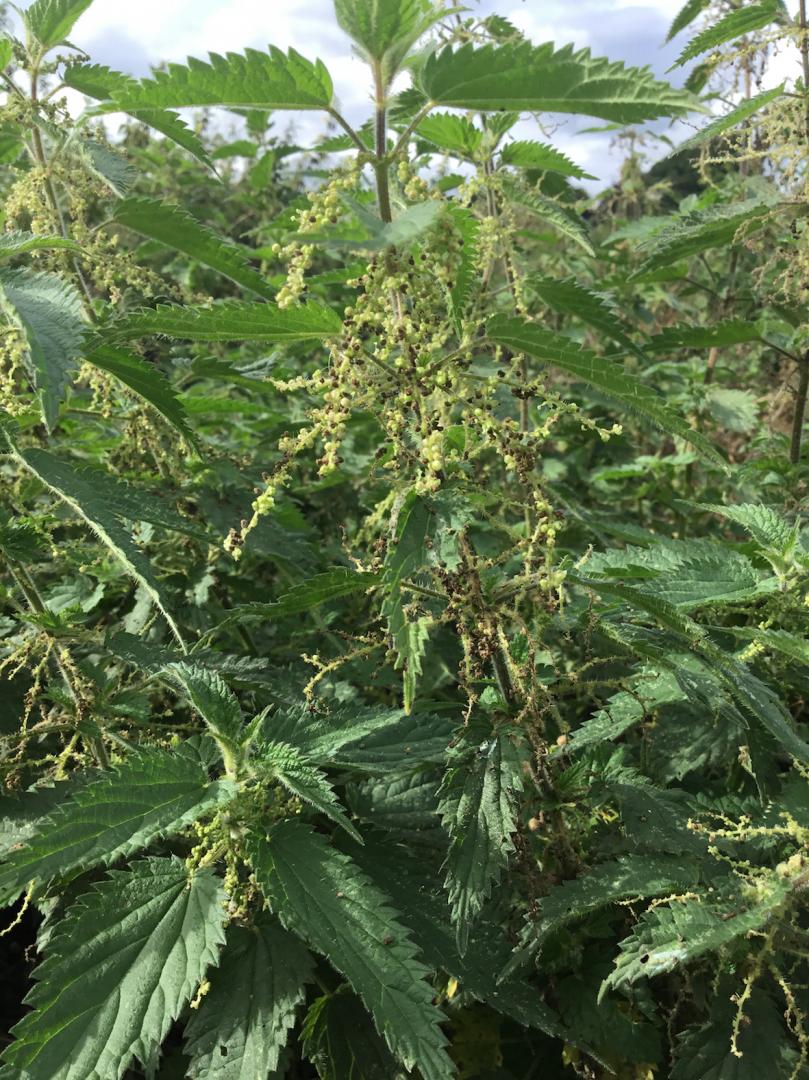Stinging nettle Urtica dioeca
EVERY child soon becomes familiar with this plant. I remember one grandchild’s first encounter with it. He had walked out of school and touched what he took to be a friendly enough plant, only to erupt in a combination of outrage that a plant could do that to him, and fury at the pain.
Stinging nettles are very common throughout the UK. They are found on waste ground, around farms, and in moist woodlands – usually in places of former and ancient human or animal habitation.
This is because they thrive on the long-lived and persisting high nitrogen and phosphates that have been deposited in both human and animal waste.
These familiar plants can grow up to five or six feet high in moist places. Shoots arise in early spring from underground stems which grow from tough lurid yellow roots.
Dioeca is the Greek for two houses, which here means that there are male and female plants, each with their own, though similar, flowers.
On both plants these inflorescences are like small catkins, with about eight to ten insignificant-looking flowers. The male anthers droop, but on maturity spring up, exploding clouds of pollen which waft away to fertilise the female flowers.
And Urtica is the Latin for sting. The leaves are covered with hairs which break off if touched, exposing a sharp edge which can penetrate the skin and inject histamine, which causes itching, and a neurotoxin which gives a burning sensation.
The plant also gives its name to urticaria (also called nettle rash or hives), a skin reaction to various allergens.
The familiar term, “grasping the nettle” refers to the act of swiftly and confidently getting hold of the nettle stem or leaves and crushing the toxic hairs before they get a chance to penetrate the skin and cause pain.
Stinging nettles have many uses. The young leaves can be eaten raw, or cooked like spinach, or made into a soup.
It is probable that the Romans used them as food while they were in the UK.
Fibres from the stem are like flax, and until the last century used to be woven into clothing.
During the First World War the Germans made nettle shirts for soldiers when cotton was scarce.
Nettles are also traditionally known to give relief to arthritic joints. A friend in Barnard Castle with arthritic fingers applies a nettle leaf or two to the skin, and claims to finds relief within minutes.
I dare you!
Dr Richard Warren is a botanist from Barnard Castle
ADVERTISEMENT
Grasp the nettle – it’ll help relieve arthritis
ADVERTISEMENT
ADVERTISEMENT
ADVERTISEMENT






